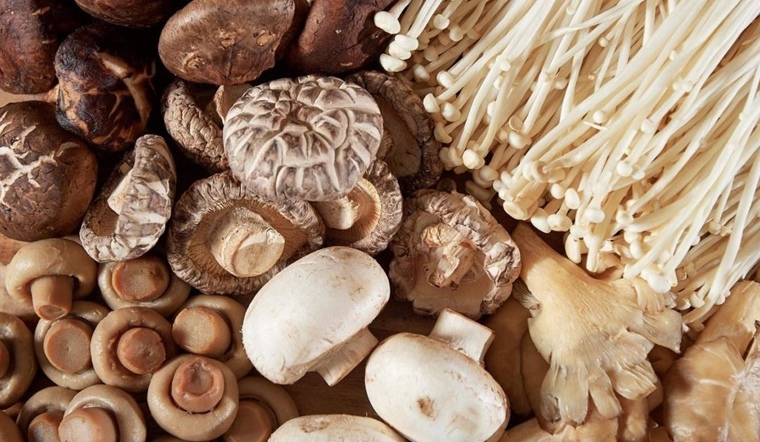
Vietnam, blessed with diverse climates and abundant agricultural by-products (straw, sawdust, rice bran), possesses an immense potential for cultivating and exporting a wide variety of edible and medicinal mushrooms. Vietnamese mushrooms are increasingly valued globally, not only for their superior flavor and nutritional content but also for the commitment to clean, safe cultivation practices.
1. Key Export Varieties and Unique Characteristics
The Vietnamese mushroom industry focuses on cultivating high-demand varieties, offering unique textures and potent health benefits:
| Mushroom Variety | Vietnamese Name | Key Export Form | Unique Selling Points |
| Shiitake | Nấm Hương/Đông Cô | Dried, Fresh | Intense umami flavor, used in Asian cuisine. Rich in B vitamins and active compounds (Lentinan). |
| Wood Ear | Nấm Mộc Nhĩ | Dried | Essential for Asian cooking. Valued for its gelatinous, crunchy texture and high Iron content. |
| Straw Mushroom | Nấm Rơm | Canned, Fresh | Native to tropical regions (Mekong Delta). Highly nutritious and delicate flavor, a staple in Southeast Asian dishes. |
| Oyster Mushroom | Nấm Bào Ngư | Fresh, Dried | Easy to grow, high yield. Versatile texture, popular in many international cuisines. |
| Medicinal Mushrooms | Nấm Linh Chi, Đông Trùng Hạ Thảo | Dried, Powder, Extract | Recognized for their significant health benefits, including immune boosting and anti-aging properties. |
Export Potential: Vietnamese mushrooms are mainly exported in the dried and processed forms (canned, extracts), which significantly enhances shelf life and simplifies logistics for distant markets like the EU, the US, and Korea.
2. Strong Position in International Trade
Vietnamese mushrooms are currently exported to over 104 countries, with major markets including:
- Asia: Taiwan, South Korea, China (high demand for traditional varieties like Shiitake and Wood Ear).
- North America: The United States, Canada (growing market for functional and organic food).
- Europe: Germany, France, Italy, the Netherlands (driven by EVFTA, increasing demand for specialty and safe food).
The market for processed products, such as dried and snackable mushrooms, is expanding, providing Vietnamese producers with an opportunity to increase value-added exports.

3. Commitment to Clean Cultivation and Quality Standards
Quality control is the key factor driving Vietnamese mushroom exports, ensuring compliance with global food safety regulations:
- GlobalGAP/VietGAP Certification: Large-scale mushroom farms and cooperatives are increasingly adopting VietGAP and GlobalGAP standards. These certifications ensure:
- Traceability: Full record-keeping from cultivation (substrate, water source) to harvest and packaging.
- Safety: Strict control over the use of chemical fertilizers and pesticides, often relying on agricultural by-products as the substrate.
- Hygiene: Maintaining clean, controlled growing environments (temperature and humidity) to produce the cleanest fruiting bodies.
- Biotechnology Application: Vietnam has mastered the technology for producing high-quality mushroom spawn, focusing on strains that are resilient and yield consistent quality for the export segment.
4. Why Choose Vietnamese Mushrooms?
- Nutritional Powerhouse: Our mushrooms are rich in protein, essential minerals (Iron, Zinc), and Polysaccharides, making them an excellent choice for vegan, vegetarian, and healthy diets.
- Year-Round Supply: Utilizing diversified cultivation techniques and climate zones allows for stable, continuous supply regardless of the season.
- Authentic Flavor & Texture: Grown in natural conditions, our traditional varieties maintain their distinct aroma and superior texture, highly sought after by global chefs and consumers.
Other articles:
Other agricultural products:

